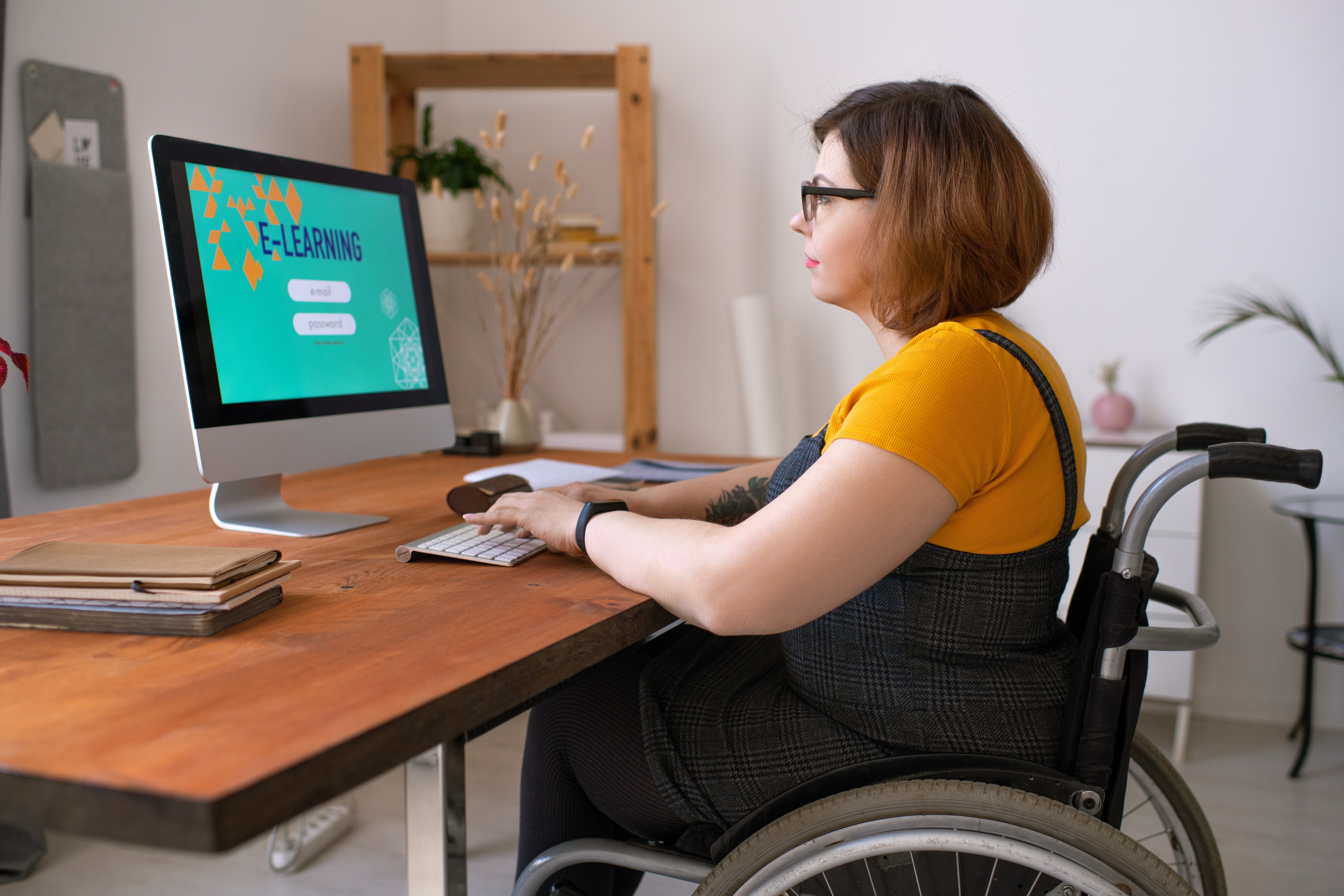Share this
Crafting Technical Training Material: A Guide to Bite-Sized Content
by Damlanur Sürek on Sep 5, 2023 8:46:43 AM
In today's fast-paced world, learners have shorter attention spans and are more demanding of engaging and relevant content. This has led to a rise in the popularity of bite-sized learning, which is a type of microlearning that delivers educational content in small, easily digestible chunks.
Bite-sized learning is ideal for technical training, as it can help learners to:
- Improve knowledge retention and engagement
- Learn new skills more quickly
- Adapt to changing technologies
- Stay up-to-date on the latest industry trends
The Rise of Bite-Sized Learning in Modern Education
Bite-sized learning is not a new concept, but it has become increasingly popular in recent years due to the following factors:
- The rise of mobile devices and the internet has made it easier for learners to access educational content on demand.
- Learners have shorter attention spans and are more likely to become bored with traditional, lecture-based training.
- Employers are increasingly looking for employees who can learn new skills quickly and adapt to change.
Understanding Bite-Sized Learning
Bite-sized learning is typically defined as content that is 5-10 minutes long. However, the specific length of a bite-sized learning module will vary depending on the topic and the learner's needs.
In addition to being short, bite-sized learning modules should also be:
- Self-contained: Each module should focus on a single topic and provide learners with all the information they need to master that topic.
- Interactive: Bite-sized learning modules should incorporate activities and assessments to help learners engage with the content and assess their understanding.
- Relevant: Bite-sized learning modules should be relevant to the learner's interests and needs.
Benefits of Bite-Sized Content in Technical Training
There are many benefits to using bite-sized learning for technical training, including:
- Improved knowledge retention: Studies have shown that learners are more likely to retain information when it is delivered in small, bite-sized chunks.
- Flexibility for self-paced learning: Bite-sized learning modules can be accessed and completed on demand, which gives learners the flexibility to learn at their own pace.
- Addressing the needs of diverse learning styles: Bite-sized learning modules can be delivered in a variety of formats, such as text, video, audio, and interactive activities. This allows learners to choose the format that best suits their learning style.
.png?width=1920&height=1080&name=Ads%C4%B1z%20tasar%C4%B1m%20(65).png)
Designing Bite-Sized Learning Modules
When designing bite-sized learning modules, it is important to keep the following principles in mind:
- Identify key learning objectives: Each module should have a clear set of learning objectives that define what learners should be able to do after completing the module.
- Segment content into manageable sections: The content of each module should be broken down into smaller, more manageable sections. This will help learners to stay focused and avoid feeling overwhelmed.
- Utilize multimedia elements: Multimedia elements, such as images, videos, and animations, can be used to enhance the learning experience and make the content more engaging.
- Create engaging learning experiences: Bite-sized learning modules should be designed to be engaging and interactive. This can be done by incorporating activities, quizzes, and case studies.
Creating Engaging Learning Experiences
In addition to the principles listed above, there are a few other things that can be done to create engaging bite-sized learning experiences, such as:
- Incorporating real-world examples and case studies: Real-world examples and case studies can help learners to see how the content applies to their own work or life.
- Encouraging learner participation and feedback: Learners should be encouraged to participate in activities and provide feedback on the content. This will help to ensure that the modules are relevant and engaging.
Adapting to Technical Training Needs
When designing bite-sized learning modules for technical training, it is important to tailor the content to the specific needs of the learners and the organization. This includes:
- Tailoring content to specific technical subjects: The content of the modules should be tailored to the specific technical subjects that learners need to learn.
- Balancing theoretical concepts with practical applications: The modules should balance theoretical concepts with practical applications. This will help learners to understand how the concepts apply to the real world.
- Addressing common challenges in technical training: The modules should address common challenges in technical training, such as complex terminology and difficult concepts.

Technology Tools and Platforms
- Learning management systems (LMS): LMSs are a popular choice for delivering bite-sized learning modules. They offer a variety of features that can help to manage the learning process, such as tracking learner progress, providing assessments, and distributing content.
- Microlearning platforms and apps: There are a number of microlearning platforms and apps that can be used to create and deliver bite-sized learning modules. These platforms offer a variety of features that can help to make the learning process more engaging and interactive, such as gamification, social learning, and personalized content.
- Multimedia and simulations: Multimedia and simulations can be used to enhance the learning experience for technical training. For example, videos can be used to demonstrate complex concepts, and simulations can be used to give learners hands-on experience with technical tools and software.
Best Practices for Implementation
When implementing bite-sized learning for technical training, it is important to follow some best practices, such as:
- Setting clear learning objectives and expectations: Learners should know what they are expected to learn from each module. This will help them to stay focused and motivated.
- Sequencing content for a logical learning flow: The content of the modules should be sequenced in a logical order. This will help learners to build on their knowledge and skills as they progress through the training.
- Monitoring progress and assessing learner performance: Learners should be monitored to ensure that they are making progress and that they are understanding the content. This can be done through quizzes, tests, and other assessments.
Case Studies: Successful Bite-Sized Learning in Technical Training
There are a number of organizations that have successfully implemented bite-sized learning for technical training. For example, Cisco Systems used bite-sized learning to train its employees on new software. The company found that bite-sized learning helped its employees to learn the software more quickly and to retain the information better.

Overcoming Potential Challenges
There are a few potential challenges that can be encountered when implementing bite-sized learning for technical training, such as:
- Dealing with resistance to change: Some learners may be resistant to change and may prefer traditional, lecture-based training. It is important to address these concerns and to explain the benefits of bite-sized learning.
- Ensuring consistent quality across modules: It is important to ensure that all bite-sized learning modules are of high quality. This can be done by having a team of experts develop the modules and by providing regular feedback to the developers.
- Managing technical constraints and limitations: There may be some technical constraints and limitations that need to be considered when implementing bite-sized learning. For example, the organization may not have the bandwidth to support streaming videos. It is important to identify these constraints and limitations early on and to develop a plan to address them.
Future Trends in Bite-Sized Learning for Technical Training
The use of bite-sized learning for technical training is likely to continue to grow in the future. This is due to the following factors:
- The rise of new technologies, such as AR and VR, can be used to create more immersive and engaging bite-sized learning experiences.
- The development of adaptive learning techniques can be used to personalize bite-sized learning experiences for individual learners.
- The increasing demand for lifelong learning will require organizations to find more efficient ways to train their employees. Bite-sized learning is a promising solution for this challenge.

Conclusion
Bite-sized learning is a powerful tool that can be used to improve technical training. It is important to follow best practices when implementing bite-sized learning and to overcome potential challenges. By doing so, organizations can reap the many benefits of bite-sized learning, such as improved knowledge retention, engagement, and flexibility.
If you are looking to create bite-sized learning for your organization, GreenMusk can help. We have a team of experts with experience in creating engaging and effective bite-sized learning modules. We can work with you to understand your needs and create a custom solution that meets your specific requirements.
Contact us today to learn more about how Greenmusk can help you create bite-sized learning that will improve the skills and knowledge of your employees.
Share this
- December 2024 (18)
- November 2024 (21)
- May 2024 (1)
- April 2024 (1)
- March 2024 (1)
- January 2024 (1)
- December 2023 (2)
- November 2023 (2)
- October 2023 (1)
- September 2023 (3)
- August 2023 (2)
- July 2023 (1)
- May 2023 (1)
- April 2023 (1)
- January 2023 (2)
- December 2022 (4)
- November 2022 (2)
- October 2022 (3)
